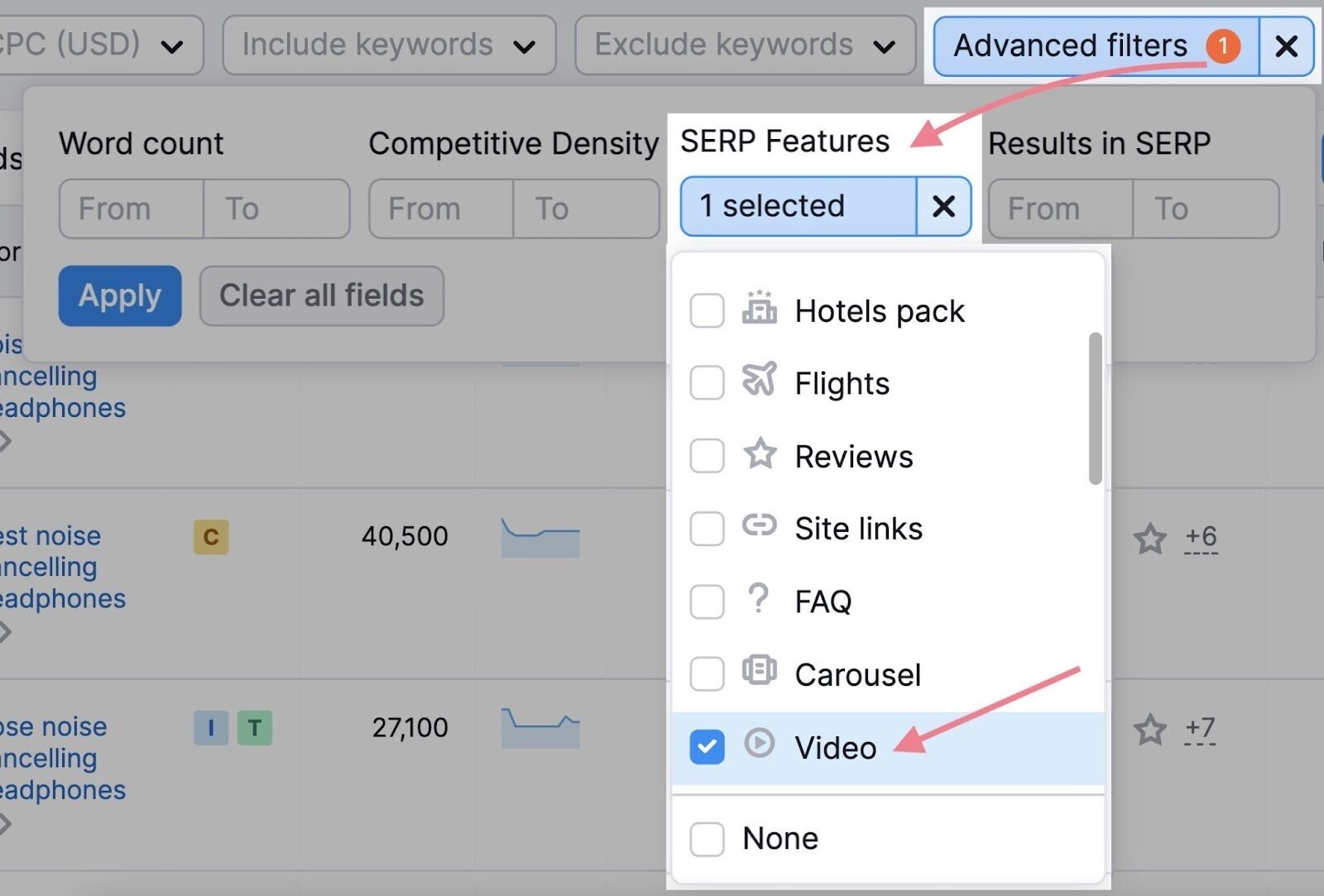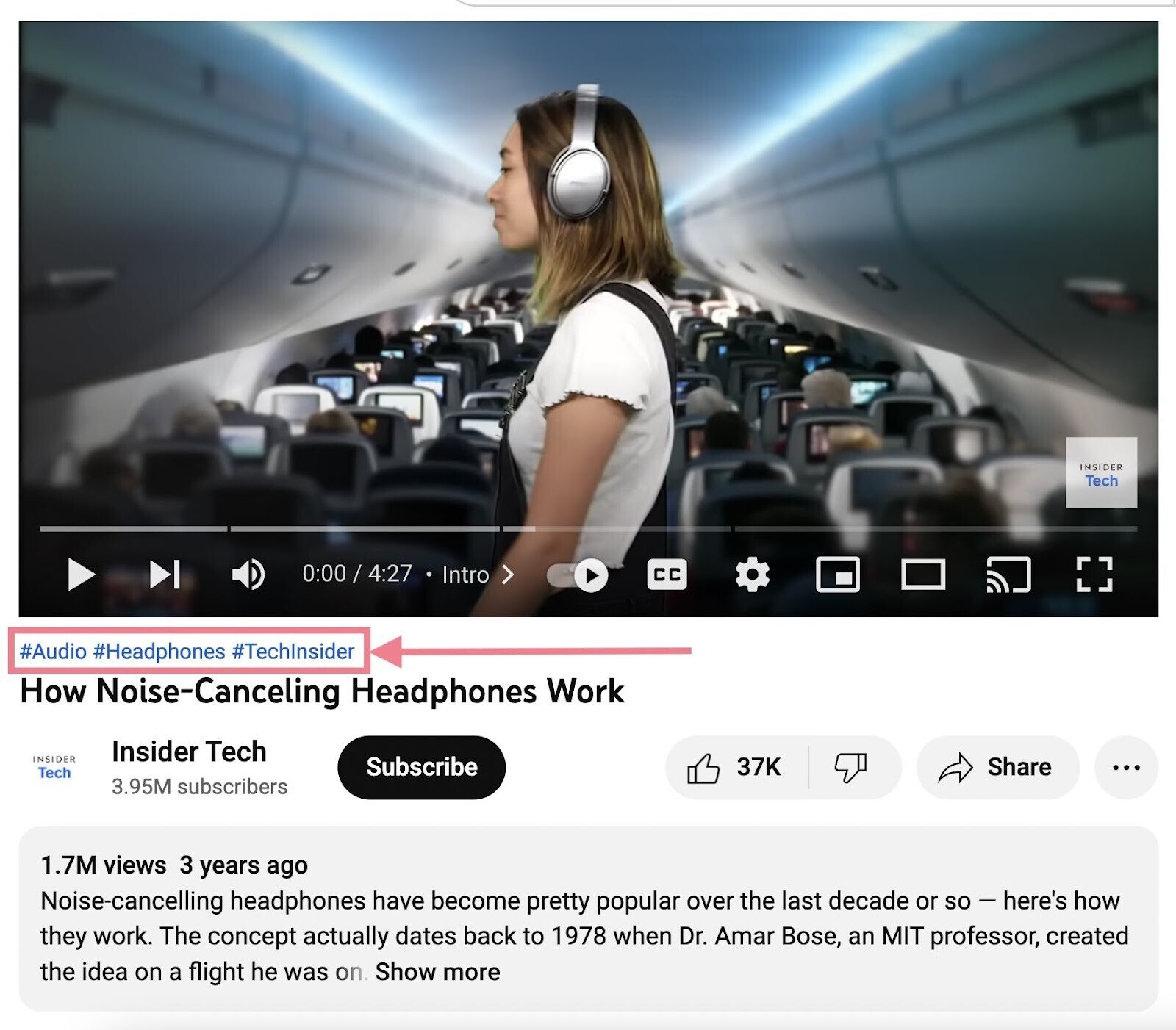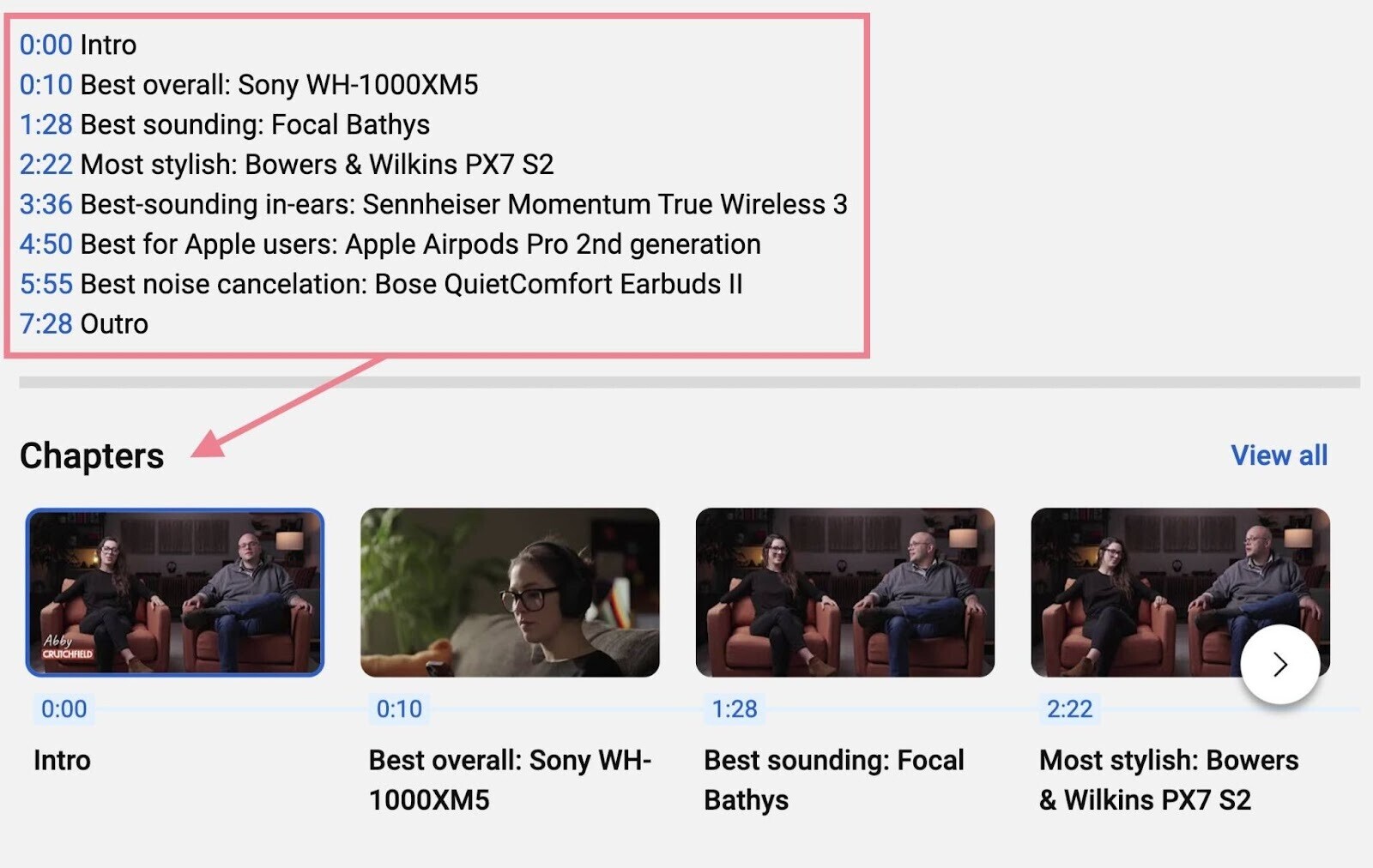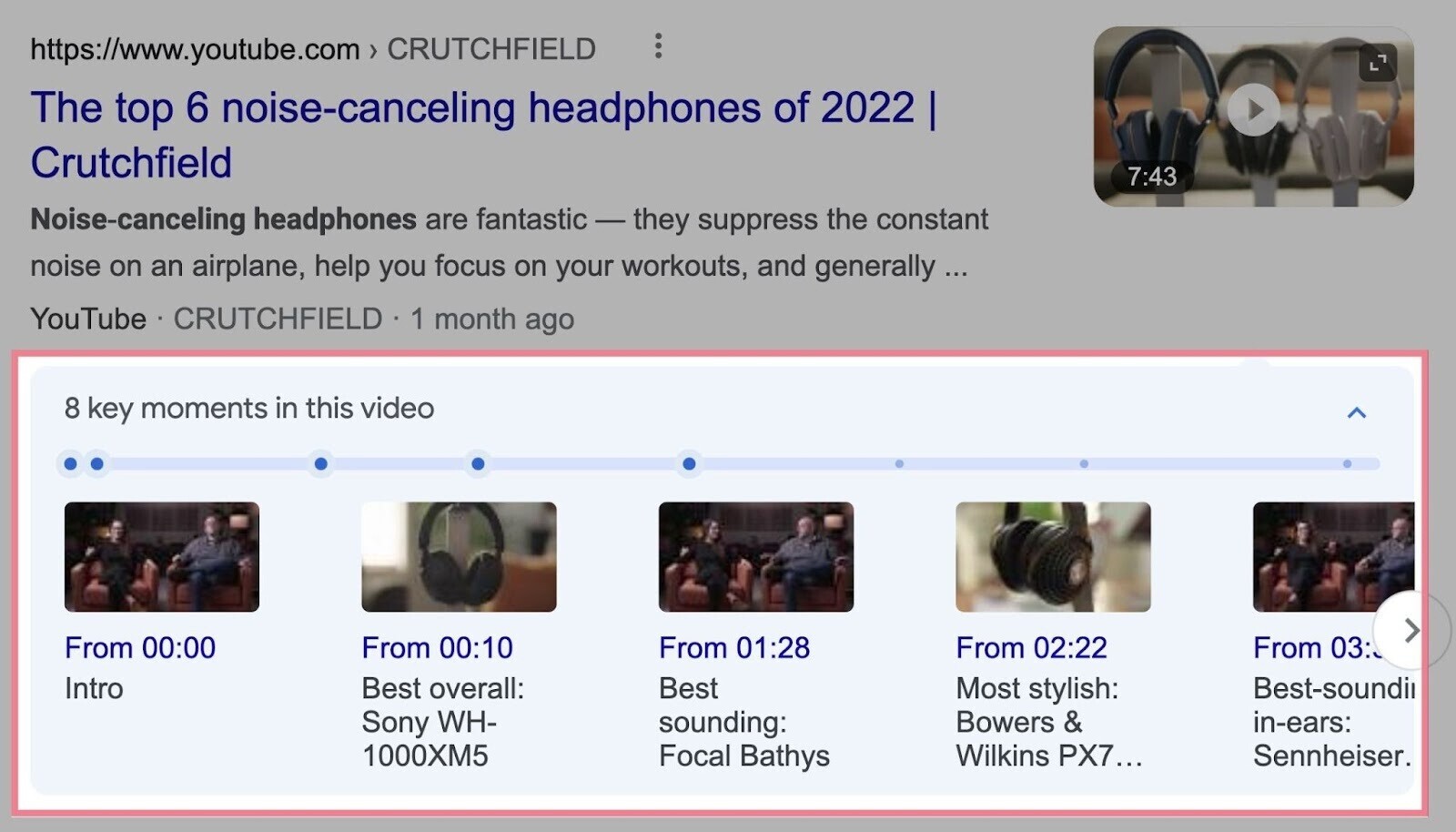Keyword research is the best way to understand your target viewers and create the kind of YouTube content they are looking for.
The better you can target and tailor your videos for your intended audience, the more likely it is that your video will show up in their YouTube searches.
And the more likely you are to get views and subscribers to your channel.
In this guide, we’ll walk you through the concept of YouTube keywords, how they work, and how to do keyword research for YouTube to get more views and subscribers.
What Is a YouTube Keyword?
A keyword on YouTube is any word or phrase that users type into the search bar to find the videos they want to watch. These words and phrases can also be called YouTube search terms or search queries.
YouTube keywords are valuable because they tell us exactly what users are searching for and the language they use to find it.
You can use YouTube keywords in your video title, description, tags, and even the thumbnail to align with what users are searching for and increase your chances of ranking for those keywords on YouTube.
How to Find Keywords for YouTube Videos
You can find keywords for your YouTube videos by leveraging one or more of the following methods:
Use YouTube’s Autocomplete Function
YouTube’s autocomplete function is designed to serve up other popular searches that are related to your query. This is one of the most straightforward methods for finding viable YouTube keywords for your videos.
You can easily grab the keywords that show up in autocomplete results and make videos that target them. And you’ll know that people are searching for that kind of content.
Start by typing in the topic of your channel or the topic you wish to make videos about. YouTube search’s autocomplete function will then serve up multiple variations of your keyword, giving you a number of great video ideas.
Rinse and repeat with other topics and ideas. Before long, you’ll have dozens of great video ideas for your channel.
Analyze Your Competitors’ Videos
Regardless of your niche or the topic of your channel, you’re bound to have competitors. Luckily, competitors can serve as great inspiration for your own videos and content.
Pull up some of your competitors’ videos and take note of the following:
- Which keywords they use in their video titles and descriptions
- Whether they use any keyword variations
- How they use keyword variations
While you never want to copy your competitors’ content, analysis like this can provide inspiration. It can also show you what it will take to get more views on your own videos.
You can take this analysis a step further by looking into which keywords your competitors leverage as tags. Tags typically have minimal impact on search results, but many YouTubers still use them to help their videos rank.
To find the keywords your competitors are using as tags, pull up a competitor video. Then, right-click next to, but not in, the YouTube search bar.
Scroll down to “View Page Source.” The HyperText Markup Language (HTML) source code will open up in a new window.
Click “Ctrl + F” or “Command + F” and type “keywords” into the search bar. You’ll see the word “keywords” highlighted with all the video’s keywords listed to the right.

You can also use a Chrome extension like Tags for YouTube to help you more easily view a video’s tags.
Use YouTube Keyword Research Tools
Keyword research tools can make finding great keywords for your YouTube videos easier and much more fruitful.
These tools can not only provide you with a list of great keywords, but they can also give you data to help determine which keywords are likely to yield the most views and engagement.
Keyword Keg, vidIQ, and TubeBuddy are just a few tools that can help you find and evaluate different YouTube keywords. They can also show you things like how often a keyword is searched and how often users click on the results.
There are a number of other free and paid YouTube keyword research tools out there.
How to Get More YouTube Views with Keyword Research
Once you’ve found the keywords you want to target with your videos, you need to ensure that the videos actually get traffic, views, and subscribers.
This process doesn’t have to be quite as complicated as you might imagine. Over the next few sections, we’ll walk you through a few ways to make your keywords work for you.
Make a Keyword Map
Use your keyword research to create a keyword map. Keyword mapping is the process of pairing specific keywords with content pages—or, in this case, YouTube videos.
The process requires making a chart or spreadsheet of your top keywords and the specific videos they will work best with.
Your YouTube keyword map can include elements like:
- A list of important keywords for your channel topic (acoustic guitar music, software development, or whatever your channel is about)
- Monthly keyword search volumes
- Your YouTube video URLs that target each keyword (or videos you are planning to make)
- Each video’s current search ranking for its corresponding keyword
- The amount of competition each keyword has
There are two key reasons to create and maintain a keyword map:
- It helps you keep track of which keywords you have and haven’t created content for. You don’t want to duplicate your efforts.
- It acts as a content roadmap of keywords you’d like to create videos for in the future. If you don’t have a video for a specific top keyword, you know what your next video should be about.
You can make videos optimized for multiple keywords. But you shouldn’t make multiple videos optimized for the same keyword.
Why? Because they will compete in YouTube search results.
For example, if you have a marketing site, and you make two videos optimized for the keyword “target ad,” the videos could take clicks and views away from each other.
Determine Search Intent
In effect, YouTube is a giant search engine. Like other search engines (Google, Bing, and Yahoo), it wants to make sure it serves up content users want to see when they search for something.
Search intent refers to what a user wants to see when they search a keyword.
For a video to rank high in YouTube’s search results for a keyword, it has to get the search intent right.
Sometimes, search terms have intents that are easy to determine. If the keyword is something like “iPad Pro Review,” you can assume the user is looking for content that reviews the product.
Other times, it can be difficult to tell what the search intent is. If the user simply types in “iPad Pro,” you don’t know if they’re looking for reviews, features, or even tutorials.
The best way to determine the search intent for a keyword is to type it into the YouTube search bar yourself to see what’s trending.
Take note of the videos that are ranking for that keyword—their titles, descriptions, content, and even their thumbnails. Aggregate what you see across the various videos that are ranking, and this will serve as the likely search intent for that keyword.
Now that you have the search intent, you can make more informed decisions regarding your own video and how to make it better align with that intent.
A user’s search intent can also explain where they are in the purchase funnel. Each keyword corresponds to a part of the purchase funnel. To build your influence and increase your conversions, you should create content for users at each stage.
The four types of keywords and their corresponding marketing funnel stages are:
- Awareness: Search intent is to learn about a product (e.g., “What are noise-canceling headphones?”)
- Interest: Search intent has a specific goal (e.g., “Benefits of noise-canceling headphones”)
- Desire: Search intent is knowledge about a possible purchase (e.g., “Top noise-canceling headphones”)
- Action: Search intent is to make a purchase (e.g., “Purchase Sony WH-1000XM4 noise-canceling headphones”)
Drive More Traffic to Your Videos with Google
You can drive even more traffic to your videos if they rank on both YouTube and Google.
To see if you can use Google to drive traffic to your YouTube videos, do a Google search for your keyword. If you see a list of videos on the search engine results page (SERP), you have a chance of getting your video to rank in Google.
If you see featured videos at the top of the SERP, your chances are even better. That means most of the people who search Google for your keyword are looking for videos.
You can take this strategy a step further by using the advanced filters in Semrush’s Keyword Magic Tool to discover which keywords serve up results with video, featured video, and video carousel SERP features.
If you can find keywords around your topic that serve up video SERP features, you can include them in your video content to drive traffic from Google and YouTube.
To find these keywords in the Keyword Magic Tool, use the “Advanced filters” to narrow your search by “SERP Features.”

Now, you’ll only see keyword results that include videos, featured videos, and video carousels as SERP features.
Once you have your keywords mapped and your content created, you can use a tool like the Video Rank Tracker to monitor how your content is performing in YouTube search. The app helps you track your videos’ rankings on YouTube for the keywords you choose.
Make Use of YouTube Hashtags
YouTube hashtags are a great way to get more views for your videos. Hashtags are popular keywords that you can add to your videos to help them get more attention from specific audiences.
YouTube lets people search for relevant keywords or hashtags that interest them. If you add popular hashtags to the titles and descriptions of your videos, you may appear in more searches.

However, adding hashtags doesn’t necessarily help you rank higher in YouTube searches. So you should only add them if your content is appropriate for them.
Leverage Video Chapters
Video chapters break your video up into sections with their own titles. These chapters not only allow for users to quickly navigate through your content to the parts they want to see, but also provide you with the opportunity to further optimize your video with more keywords.
Video chapters are created as part of the description, so they are read and indexed by YouTube. This means you can use them to optimize your video content.
To add video chapters:
- Type a timestamp into your video’s description, starting with 0:00 and then a keyword-optimized title
- Add a second timestamp that corresponds with a change in the topic or tone of your video, and add another keyword-optimized title
- You must have at least three chapters for it to work
Here’s what video chapters can look like in your YouTube video description:

And those chapters can even appear in Google SERPs, potentially increasing traffic:

Add Keywords to YouTube Videos as Tags
Tags are descriptive words and keywords that can make it easier for users to find your content. They are especially useful if your video content is about a topic that is commonly misspelled.
Google claims that tags play a minimal role in video ranking and discovery. But it’s still a good idea to add them just in case they end up being helpful for some users.
To add tags to new YouTube videos:
- Sign in to your YouTube Studio account and click “Create” in the top-right corner (There’s a picture of a little camera.)
- When you choose the video you want to upload, click “More Options”
- Then, you can type in your tags
For videos already on your channel:
- Sign in to YouTube Studio.
- Click “Content” in the menu to the left.
- Choose which video you want to add tags to.
- Then, type in your tags in the “Tags” field
YouTube Keyword Research FAQs
We’ve compiled the most frequently asked questions about YouTube keywords and their answers below.
How Do You Create ‘Channel’ Keywords on YouTube?
After conducting keyword research, you can add keywords to your channel description, assign channel tags based on them, and use them to optimize your YouTube video titles.
What Are the Best Keywords for YouTube?
The best keywords vary, depending on the topic of each video. Some videos may cover wide-ranging, high-level topics. You’d likely want higher-volume keywords that attract an audience. If you’re looking to create niche videos, your keywords should be more targeted to those who want to watch your videos.
For example, someone looking up “oil change” on YouTube might be wanting to know why they should get an oil change. If someone else were searching for “how to do an oil change,” you’d want to optimize your post to attract an audience that’s looking to perform the action themselves and is already knowledgeable about the topic.
How Do You Find the Best Keywords for YouTube?
You can use the YouTube autocomplete feature, the HTML source code for other videos, or keyword research tools. Also, don’t forget about Semrush’s Keyword Magic Tool to help your research.

